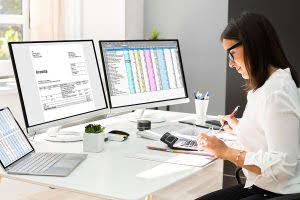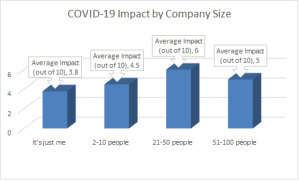
The balance sheet previews the total assets, liabilities, and shareholders’ equity of a company on a specific date, referred to as the reporting date. Assets represent things of value that a company owns and has in its possession, or something that will be received and can be measured objectively. Liabilities are what a company owes to others—creditors, suppliers, tax authorities, employees, etc. They are obligations that must be paid under certain conditions and time frames.
Owners’ Equity
Assets are typically listed as individual line items and then as total assets in a balance sheet. When capitalizing costs, a company is following the matching principle of accounting. The matching principle records expenses in the same period as the related revenues. In other words, the goal is to match the cost of an asset to the periods in which it is used and, therefore, generate revenue, as opposed to when the initial expense was incurred. According to generally accepted accounting principles (GAAP), capitalizable costs are those necessary to prepare an asset for its intended use. However, other costs, such as licenses and training, can’t be capitalized and shouldn’t be included in the asset’s acquisition cost.

Great! The Financial Professional Will Get Back To You Soon.
Companies might choose to use a form of balance sheet known as the common size, which shows percentages along with the numerical values. Investors and lenders also use it to assess creditworthiness and the availability of assets for collateral. It is crucial to remember that some ratios will require information from more than one financial statement, such as from the income statement and the balance sheet. You will need to tally up all your assets of the company on the balance sheet as of that date. This means that the assets of a company should equal its liabilities plus any shareholders’ equity that has been issued.
Current Assets
- In these instances, the investor will have to make allowances and/or defer to the experts.
- Get instant access to lessons taught by experienced private equity pros and bulge bracket investment bankers including financial statement modeling, DCF, M&A, LBO, Comps and Excel Modeling.
- Maybe the prep work you were doing early in August has been drastically changed, or maybe you were waiting until the dust settled before you got yourself geared up to draft.
- If this balance sheet were from a US company, it would adhere to Generally Accepted Accounting Principles (GAAP), and the order of accounts would be reversed (most liquid to least liquid).
- It is crucial to remember that some ratios will require information from more than one financial statement, such as from the income statement and the balance sheet.
Equity can also drop when an owner draws money out of the company to pay themself, or when a corporation issues dividends to shareholders. We accept payments via credit card, wire transfer, Western Union, and (when available) bank loan. Some candidates may https://www.bookstime.com/articles/what-does-mm-mean qualify for scholarships or financial aid, which will be credited against the Program Fee once eligibility is determined. By looking at the sample balance sheet below, you can extract vital information about the health of the company being reported on.
- Balance sheets of small privately-held businesses might be prepared by the owner of the company or its bookkeeper.
- It’s sitting on massive gains from its common stock shares of BofA, which currently trade around $38.50.
- In order to provide uninterrupted coverage, most service providers partner with other networks to “share” a signal when necessary.
- Each category consists of several smaller accounts that break down the specifics of a company’s finances.
- He finished in the top five in total fantasy points by a TE in the past three seasons and top two in fantasy points per game since 2022.
Apple’s total liabilities increased, total equity decreased, and the combination of the two reconcile to the company’s total assets. A company’s financial statements—balance sheet, income, and cash flow statements—are a key source of data for analyzing the investment value of its stock. Stock investors, both the do-it-yourselfers and those who follow the guidance of an investment professional, don’t need to be analytical experts to perform a financial statement analysis.


Owners’ equity, also known as shareholders’ equity, typically refers to anything that belongs to the owners of a business after any liabilities are accounted for. External auditors, on the other hand, might use a balance sheet to ensure a company is complying with any reporting laws it’s subject to. Here’s everything you need to know about understanding a balance sheet, including what it is, the information it contains, why it’s so important, and the underlying mechanics of how it works. Different accounting systems and ways of dealing with depreciation and inventories will also change the figures posted to a balance sheet. Because of this, managers have some ability to game the numbers to look more favorable.
What is Data Roaming?
They are divided into current assets, which can be converted to cash in one year or less; and non-current or long-term assets, which cannot. Balance sheets of small privately-held businesses might be prepared by the owner of the company or its bookkeeper. On the other hand, balance sheets for mid-size private firms might be prepared internally and then reviewed over by an external accountant.
- In contrast, the income and cash flow statements reflect a company’s operations for its whole fiscal year—365 days.
- They provide a solid basis for sound decision-making, enabling stakeholders to evaluate a company’s financial performance and situation confidently.
- You will need to tally up all your assets of the company on the balance sheet as of that date.
- More importantly, the stock has grown in step with Berkshire Hathaway, and even faster over the past year and a half.
- This balance sheet also reports Apple’s liabilities and equity, each with its own section in the lower half of the report.
- Liabilities may also include an obligation to provide goods or services in the future.
- It cannot give a sense of the trends playing out over a longer period on its own.
Is there any other context you can provide?
A company will be able to quickly assess whether it has borrowed too much money, whether the assets it owns are not liquid enough, or whether it has enough cash on hand to meet current demands. How assets are supported, or financed, by a corresponding growth in payables, debt t balance sheet liabilities and equity reveals a lot about a company’s financial health. For now, suffice it to say that depending on a company’s line of business and industry characteristics, possessing a reasonable mix of liabilities and equity is a sign of a financially healthy company.
